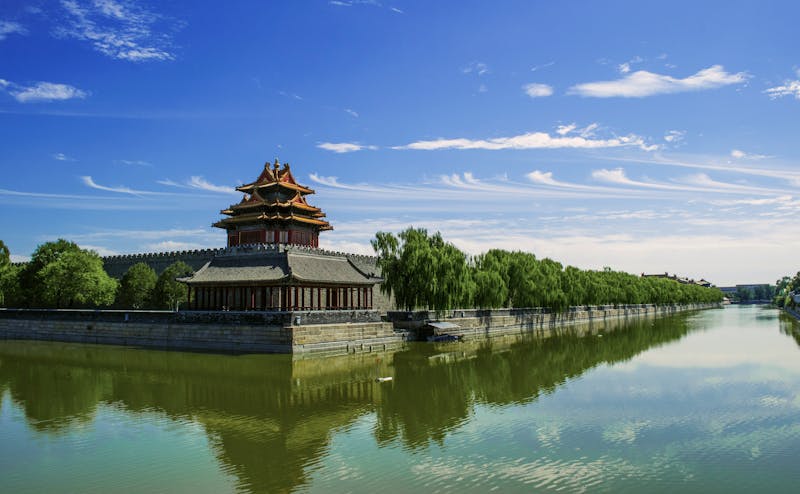The Rich Heritage of China’s Silk Road

The Silk Road, a network of trade routes connecting the East and West, has a rich heritage that spans over two millennia. Originating during the Han Dynasty (206 BCE - 220 CE), it facilitated not only the exchange of goods but also cultural, technological, and ideological exchanges. This ancient route played a crucial role in shaping civilizations and fostering global connections long before modern globalization.
Historical Significance
The Silk Road's historical significance is immense. It served as a conduit for the exchange of silk, spices, tea, and other precious commodities between China and regions as far as Europe and Africa. The name "Silk Road" itself originates from the lucrative trade in silk that was primarily carried out along this route.
Key cities along the Silk Road, such as Xi'an in China, Samarkand in Uzbekistan, and Constantinople (modern-day Istanbul) in Turkey, became bustling centers of commerce and cultural exchange. These cities were not only trading hubs but also melting pots where diverse cultures, religions, and ideas converged.
One notable historical figure associated with the Silk Road is Zhang Qian, a Chinese diplomat and explorer during the Han Dynasty. His travels helped establish diplomatic relations with various Central Asian countries and opened up new trade routes that significantly expanded China's influence.
Cultural Exchange
The Silk Road was instrumental in facilitating cultural exchanges between different civilizations. Artifacts found along the route reveal a blend of artistic styles from various cultures, including Chinese, Persian, Greek, and Indian influences.
Buddhism spread from India to China through the Silk Road, profoundly impacting Chinese culture and philosophy. Buddhist monks traveled along these routes, bringing sacred texts and teachings that would shape religious practices in East Asia for centuries to come.
In addition to Buddhism, other religions such as Zoroastrianism, Manichaeism, and Islam were transmitted along the Silk Road. This exchange of religious ideas contributed to the rich tapestry of spiritual beliefs in regions connected by the route.
- Spread of Buddhism from India to China
- Influence of Persian art on Chinese ceramics
- Introduction of new crops like grapes and alfalfa to China
Technological Advancements
The Silk Road also played a pivotal role in the dissemination of technological advancements. Innovations such as papermaking and gunpowder were transmitted from China to other parts of the world via this trade network.
Papermaking technology revolutionized communication and record-keeping in both the East and West. The introduction of paper allowed for more efficient administration and facilitated the spread of literature and knowledge.
Gunpowder, another significant Chinese invention, had a profound impact on military tactics and warfare. Its spread along the Silk Road eventually led to its use in cannons and firearms in Europe during the Middle Ages.
Modern-Day Relevance
The legacy of the Silk Road continues to resonate in contemporary times. In recent years, China's Belt and Road Initiative (BRI) has been likened to a modern revival of the ancient Silk Road. This ambitious infrastructure project aims to enhance connectivity and economic cooperation between Asia, Europe, and Africa.
The BRI seeks to develop trade routes reminiscent of the historical Silk Road by investing in transportation networks such as railways, highways, ports, and airports. By doing so, it aims to foster economic growth and strengthen geopolitical ties between participating countries.
Critics argue that while the BRI holds potential for economic development, it also raises concerns about debt sustainability for participating nations and geopolitical implications for global power dynamics.
Notable TED Talk: Peter Frankopan on The New Silk Roads
One prominent TED Talk that delves into the significance of the Silk Roads is by Peter Frankopan. In his talk titled "The New Silk Roads," Frankopan explores how these ancient trade routes are being reimagined in contemporary times through initiatives like China's Belt and Road Initiative.
Frankopan emphasizes that understanding the history of the Silk Roads is crucial for comprehending current global dynamics. He highlights how these routes have always been about more than just trade; they represent connections between diverse cultures and civilizations.
| Aspect | Historical Silk Road | Modern Belt & Road Initiative |
|---|---|---|
| Primary Purpose | Trade & Cultural Exchange | Economic Development & Connectivity |
| Main Participants | China, Central Asia, Europe | Over 60 countries worldwide |
| Key Commodities | Silk, Spices, Tea | Infrastructure Investments |
| Cultural Impact | Buddhism Spread to China | Diverse Cultural Interactions through Projects |
| Technological Transfer | Papermaking & Gunpowder Spread Westward | Modern Infrastructure Technologies Shared Globally |
From facilitating trade and cultural exchanges, China's Silk Road is an ancient network has shaped civilizations across continents for over two millennia.